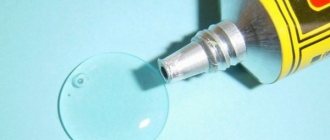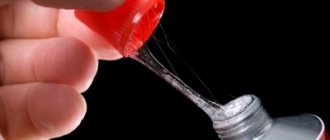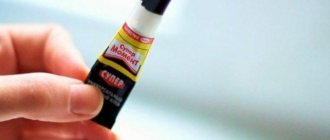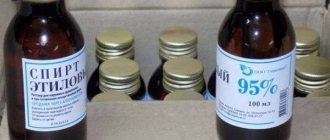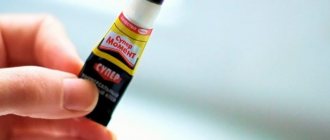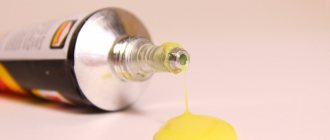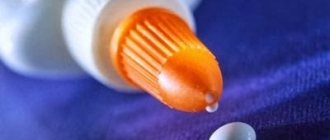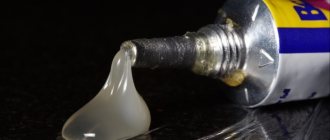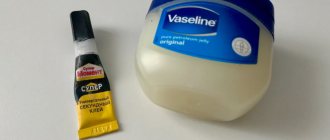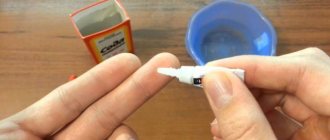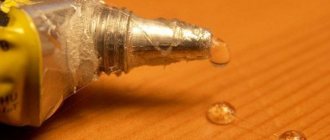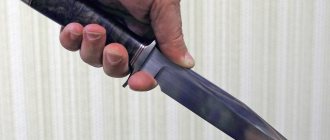Removing superglue from furniture must be done carefully. The difference between superglue is that it hardens instantly, so you work with it quickly and carefully. If the product gets on furniture, you must act quickly.
To remove fresh contaminants, no aggressive agents are required. It will be easier to keep the surface in its original condition. You can remove superglue from tables and other furniture using folk remedies or chemical compounds. Each product must be tested, since many methods cannot be used on wooden furniture, especially if it is not varnished or painted.
The main feature of superglue
The product is used in everyday life for various purposes. It is easy to use, and the results of the work appear instantly. The downside is the liquid consistency, which during operation leads to spreading everywhere and sticking to various objects, including the skin of the hands. In some cases, you cannot do without using a “miracle” remedy. Restores damaged items discreetly.
You only need to work with gloves. If glue gets on furniture, remove it immediately.
If the stain has already dried, strong substances may be required.
The chemical composition of superglue does not contain solvents, so upon contact with moisture the composition instantly hardens. It is not recommended to use cellulose for joining materials, as the chemical reaction releases heat, causing a fire. Therefore, you should avoid contact with cotton or woolen items. Caring for your wardrobe eliminates the use of superglue.
It is recommended to protect the respiratory system from inhaling vapors that adversely affect the liver.
In case of contact with the skin of your hands, you do not need to resort to removal methods; after a few days, the epidermis will cleanse itself.
It is important not to forget to close the tube of glue; the composition quickly hardens in air.
How to remove super glue from furniture
Superglue hardens quickly and is not easy to remove.
First of all, it is important to prevent such compounds from getting on furniture. If there is a need to glue a damaged decorative part, this must be done with caution. When working with glue, it is better to cover the surface of a table or other interior item with paper so that drops do not fall on them.
The glue is based on cyanoacrylate, which dries very quickly and is difficult to remove. Your task is to dissolve or soften it as much as possible.
To remove glue you may find it useful:
- scotch;
- rags and napkins;
- blade, knife or scraper;
- toothbrush and fine-grained sandpaper;
- hair dryer;
- soap or vegetable oil;
- toothpaste;
- acetone, dimexide, gasoline, white spirit;
- alcohol and vinegar.
Start removing with milder products and only if necessary, move on to strong solvents.
Basic anti-superglue remedies
Methods include compositions that are available in any home. You can clean superglue using:
- Acetone and solvents.
- Soap.
- Dimexide.
- Alcohol and gasoline.
- Temperature method.
Acetone and solvents
You can easily wipe off superglue using an acetone-containing liquid. At home, use nail polish remover or paint thinner. Soak a cotton swab well in the liquid and apply it to the stain. Exposure time is 20 minutes.
Afterwards, use a clean cloth or toothbrush to remove the residue. Use acetone and nail polish remover with caution. Furniture may lose color. To avoid damage to the coating, test the liquid in an inconspicuous area.
It is prohibited to use solvents on furniture coated with varnish.
Soap
It is not an aggressive chemical, so it may not always be effective. Wipe the stain with a soapy solution and hot water. It is more effective when applied to the skin of hands and clothing.
A soft cloth soaked in a soapy solution removes complex stains without the risk of damaging the material. Any foaming product can be used as a base, including oil-based creams and scrubs. The disadvantage of this method is the processing time. You will need to repeat the procedure several times.
Dimexide
A pharmaceutical product used at home not only for medicinal purposes. It is considered an effective remedy and is used for large dried spots. Using a cotton pad, apply the solution to the affected area. The product removes paint and adhesive bases. It is easy to purchase in pharmacies everywhere; a prescription is not required. You need to wear gloves when working with the product, as it has an aggressive chemical composition. Remove residues with soapy water and clean water. For many, the smell of the composition is unpleasant.
Alcohol and gasoline
Gasoline, which is sold at gas stations, is used to treat furniture from adhesive stains, but a sensitivity test of the material is first carried out. It is not recommended to wash off the still liquid glue with gasoline and alcohol; it is advisable to wait until it dries completely. Soak a clean cloth thoroughly in any of the products and apply to the area for a few minutes. After treatment, remove any remaining product using clean warm water or soap solution.
Temperature method
It can be difficult to wipe off superglue from the table; using chemical compounds is not always safe, then you can use a simple household hair dryer to dry your hair. Under the influence of warm air, the dirt will lose its adhesion to the surface and can be easily removed with a wooden stick. Freezing has a similar effect, which will crumble the material.
Use only plastic or wooden objects to remove residue, as metal may leave permanent scratches.
How to remove glue liquid nails from clothes?
To solve the problem you need to:
- You can wash off the acrylic composition from your hands with soap and water. ...
- Scrub stains on leather furniture with baby cream. ...
- Sunflower oil and Vaseline are suitable for cleaning the skin. ...
- Liquid nails are wiped off clothes
using acetone. ... - After treatment, things must be washed and furniture wiped down.
Interesting materials:
At what mileage should the timing belt be changed? At what mileage should I change the brake fluid? At what mileage should the oil be changed? At what mileage should the timing belt be changed? At what mileage should the valves be adjusted? How long does it take to clean the throttle valve? How long does it take to clean the injectors? In how many days will New Year 2022 arrive? After how many kilometers should you change the antifreeze? After how many kilometers should the timing belt be changed?
What ways can damage the table surface?
You can try any remedy. As a result, one of them will be effective. Inaccurate use will damage the surface. In order for work with superglue to be carried out without consequences, you need to familiarize yourself with the following tips:
- Solvents are aggressive, they can only be used as a last resort, only after a preliminary test on an inconspicuous area.
- Use caustic chemicals in well-ventilated areas. Take the children out of the room. A child's body can become poisoned from fumes. Use gloves and a mask for respiratory protection.
- It is strictly prohibited to use solvents, gasoline or other hazardous chemicals on surfaces in contact with food.
- Use a less aggressive method initially and gradually increase the strength of the agents used.
- Be sure to use any product only after preliminary testing. It is recommended to spend a few minutes waiting for the final reaction. After the chemical reaction, remove the residue to see a reliable result.
Remember that some products may have a negative effect on the skin. Signs of a chemical burn appear, redness, burning, etc. A respirator will save the respiratory system from an allergic reaction, damage to the bronchi and other problems. Vapors can cause toxic poisoning, which is accompanied by nausea, headache, and swelling of the mucous membranes. To avoid the accumulation of toxic fumes, ventilate the room.
Place paper, film or other protective covering on your work area. Drops will fall on the coating without damaging the furniture.
Operational approach
The easiest way is water. It will easily remove any water-based product.
They are made using adhesive and water. After the water dries, the necessary parts are glued together.
IMPORTANT. It is best to remove unnecessary fastening agent before it dries completely. Otherwise, difficulties may arise with this process.
Basic methods for removing superglue
All removal methods are divided into:
- Professional.
- Chemical.
- Folk.
- Mechanical.
We recommend that you familiarize yourself with the main methods of removing glue:
Professional way
Superglue is highly resistant to temperature changes, chemical composition and moist air. The area of contamination can be easily cleaned using special products. Such products are marked “anti-glue”. Buy prof. funds can be found in a construction supermarket. They are the best method. Disadvantage - it has a strong toxic odor, emits toxic fumes, and when working it is necessary to strictly observe safety precautions.
It is not recommended to use in children's rooms and on children's furniture and things.
Mode of application:
- Apply with a cotton swab, disk or swab to the dried drop.
- Leave to act for 20 minutes maximum.
- Use a dry, lint-free cloth to remove any residue.
If the first treatment is not successful, you can repeat the procedure.
Chemical methods
The use of such products is widespread, since the basic substances are available in almost any home.
Dimexide is a pharmaceutical product. Capable of removing dried glue even from plastic elements. Safe for use on computer monitors, phone displays.
The effect of the drug is mild and effective. Does not harm capricious surfaces. Instantly reacts with the epidermis; you can only work with gloves.
Acetone and nail polish remover are used on furniture made of hard materials with natural upholstery. Acetate-based fabrics undergo a chemical reaction and melt. Nail polish remover must contain acetone.
White spirit and gasoline are more aggressive than acetone, and therefore more effective. The risk of damaging the appearance of the furniture increases. White spirit will remove fresh stains without leaving a trace.
Traditional methods
Manufacturers use cyanoacrylate. The substance softens in warm water. The method may be ineffective, but is approved for use in the presence of children. To enhance the method, add soap and washing powder to warm water. Softened glue is easily removed without harming the surface.
Acetic acid can dissolve dried stains. Dilute a tablespoon of acid in a glass of water and soak the stain well. The essence is effective on metal. It is necessary to work in gloves, a respirator, safety glasses and in a well-ventilated area.
You can easily remove superglue from products using citric acid. Unlike acetone, it is safe for humans. After exposure to juice or acid, remove any remaining glue with a toothbrush.
Vaseline, margarine, oil and other fat-based products remove glue from furniture and leather. After treatment, the remaining active substance is removed with a soap solution.
Salt or soda are available in the kitchen of any housewife. Safe means. Mix with warm water to form a paste and apply to the contaminated area. After 20 minutes, the stain will soften and be easy to remove. Be careful when using on furniture coated with varnish and paint, the abrasive composition leaves scratches.
Mechanical method of removing glue
Applicable to hard surfaces. For removal, improvised means are used that can scrape, beat off, or tear off the dried stain. It is important to carry out the procedure delicately. Scratches from a razor or sharp knife form on the glass surface.
The technique is as follows:
- Gentle pressure and light blows can crack the dried material. Most parts will fall behind in the first stage.
- Use a sharp needle to pry off loose areas.
The mechanical method is rarely used independently. It is more rational to use it with other methods.
We recommend watching a video on how to clean superglue from fabric:
Specialized compounds
On sale you can find special compounds designed to remove glue from furniture.
Super Moment Anticley
The leader is “Super Moment Antikley”. It is used as follows:
- Apply the product to the stain precisely;
- cover it with a paper napkin;
- leave to act for 10-12 hours;
- remove with a soft cloth.
The gel is squeezed out through a small opening, so it is convenient to apply. It does not spread over the surface. The cost of Anti-Glue is about 100 rubles, so it is affordable for purchase for most people.
The main disadvantage of the product is its small volume, which is 5 g. To clean a large surface, you will need to purchase several packages at once.
Mellerud
The second place among the compositions developed for removing glue is Mellerud liquid. Instructions for use:
- Dampen a rag with the solution.
- Treat the contaminated surface.
- Leave for 5-15 minutes.
- Remove traces of glue.
Repeated contact with skin may cause Mellerud to crack.
The product works quickly, you don’t have to wait several hours. It is used to treat any surfaces.
The only drawback is the high price. For a 250 ml bottle you will have to pay 390 rubles.
KUDO
Rounding out the top three is “KUDO: adhesive trace remover”. Instructions for use:
- shake the can vigorously;
- spray the composition onto the surface to be treated;
- leave for 30-40 minutes;
- remove the product with a dry cloth.
The spray is evenly distributed, it is convenient to apply, as it is equipped with a sprayer, which eliminates contact with the skin of the hands. The composition has a pleasant smell. The spray costs about 370 rubles (bottle volume 400 ml).
Alcohol and gasoline
Gasoline used to fuel cars is also suitable. It is imperative to check the interaction of the liquid and the surface of the furniture, since gasoline varies, and additives can negatively affect the material of the items being cleaned. Cleaning should be done with glue that has already dried, since liquid glue can react with cleaners, and instead of cleaning, it will only make the stain bigger. The method is the same as with acetone: wet a soft cloth, apply it to the stain and wait a few minutes. Then wipe off the dirt and wash the area with warm soapy water or water.
A cheap and affordable product can be bought at any pharmacy. The advantage, compared to previous liquids, is its safety, less aggressive impact on the furniture material. This product can be used to clean children's furniture. If you can’t clean it right away, you can repeat the process. Fresh glue stains are removed immediately; for old ones, you can leave the fabric in place for a day, periodically moistening it with water. Then wash off the traces and wipe thoroughly.
Recommendations
The following tips will help you remove glue from glass:
- If home methods are ineffective, you can resort to special means.
- When cleaning the glue with a knife or blade, you can damage the glass and leave scratches on it.
- It is recommended to use cleaning chemicals in a well-ventilated area using rubber gloves.
- In the process of cleaning the glass, when the glue begins to soften, it is better to remove it immediately so that it does not spread over an even larger area.
- When removing glue, you must try not to get solvents on rubber, plastic and metal parts.
Recommendations
Despite the resistance of glass to reagents, during the cleaning process it is necessary to take into account the advice of professionals:
- The glass should not be heated unevenly, as it may crack.
- Exposure to abrasive substances (rough, rough surface of a sponge, powders, etc.) can leave scratches on the glass.
- When exposed to solvents, the adhesive changes its shape, becoming viscous, and can spread over the surface.
- You need to remove the glue in the direction from the edge to the center of the stain.
- Do not apply force or pressure when wiping off the adhesive mass, as the glass may burst.
- The adhesive drip cannot be heated using an open flame, as there is still a risk of glass cracking and the appearance of black stains.
- It is easiest to remove glue that has not hardened or set.
- When working with solvents, you should wear rubber gloves and ensure that the room is well ventilated.
- Using a purchased super glue solvent for the first time, you need to study the instructions for it.
- If you don’t have a plastic scraper that’s convenient for removing super glue without damaging the glass, you can use an unnecessary discount or old bank card.
Find useful tips and tricks for removing glue from glass surfaces here. Read about removing different types of glue from different surfaces here.
